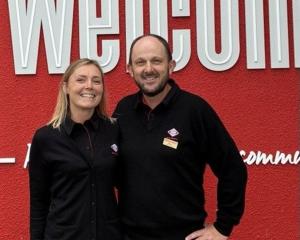
Under the guidance of New Zealand resident "Bugman" Ruud Kleinpaste, the project aims to help the rural pupils become more nature literate.
The pupils have primarily been learning about the short-haired bumblebee which was one of the four species of bees imported into New Zealand from the United Kingdom in the 1800s.
The bee is now considered extinct in its native homeland but is very much alive and well in the Mackenzie Country.
Lake Tekapo School principal Simon Waymouth said Mr Kleinpaste had contacted the school with the idea of protecting the bumblebee.
"It was 100% a surprise to have him reach out. He has done stuff in other schools and from a school's point of view, you try hard ... to meet learning needs.
"We’ve been trying to establish some sense of kaitiaki [guardianship] sustainability, so the fact they approached us has allowed us a platform to do so.
"It allows us to broaden our curriculum and have some pretty high calibre people delivering the science component to our teaching."
The programme was also locally funded. A local man, Dennis Viehland, had been putting money into having more science in schools, which allowed Lake Tekapo Primary to get access to the Bugman.
Mr Waymouth said three sessions had been held at the school so far.
"The first thing Ruud did was have the kids spend a day with bugs.
"He brought a variety of New Zealand bugs and that was actually acclimatising the kids to get used to bugs. Even his staff were like ‘we don't want that on us’.

The subsequent sessions included the pupils learning about wildflowers, sowing seeds and setting up a Zonda beehive (a home gardener hive) in an effort to lure the species to the school and give them a home.
The pupils also went to Aoraki/Mt Cook to visit the native area and do a biodiversity scan using the iNaturalist app so they could identify what they discovered.
The children had been very receptive of the project, Mr Waymouth said.
"They’re outdoor rural kids, they are bug kids. It’s right up their alley.
"The parents have welcomed it as well because it sits within that unique nature of where we are. It's been bloody good.
"It's quite nice to look at nature in terms of nature in a protection mode, not nature in a ‘we need to get rid of it’ mode."
On Tuesday, Mr Kleinpaste, along with Geoff Brunsden, from the Bumblebee Conservation Trust, and Simone Smits, from the Te Manahuna Aoraki Project, gave a free, all-welcome, community talk centring on biodiversity in the Mackenzie Country.
Mr Waymouth said the plan was to have the bumblebee project running for the foreseeable future.
"We're not looking at it as a five-minute wonder.
"You don't want to be caught saying it, but often you start something, it's there, and then it falls away. What we're hoping is that through the funding and through the access to specialist knowledge, we can keep it top of the pile.
"We're starting with the bee, but I can sort of see there's going to be opportunities for other elements to creep in as well."












